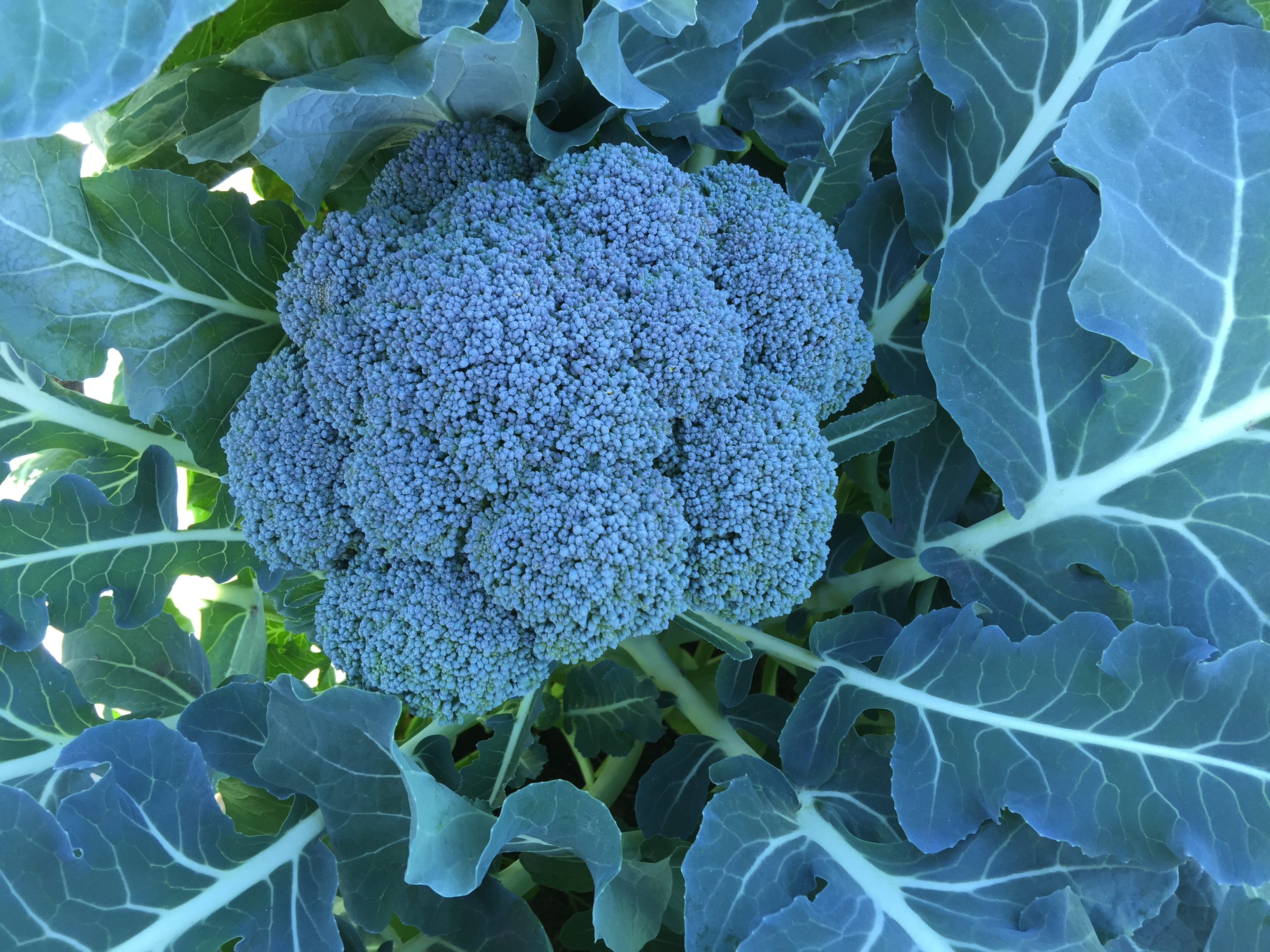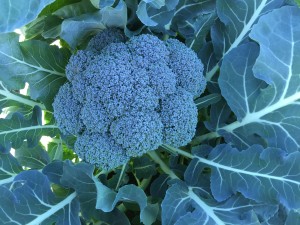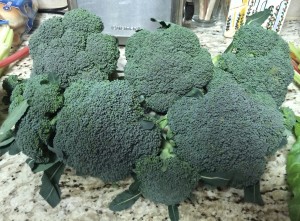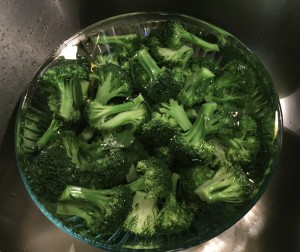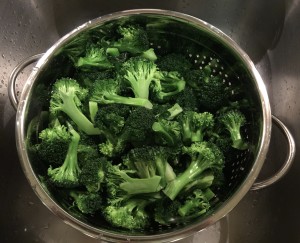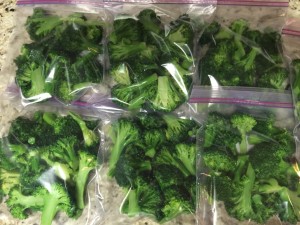We grew some beautiful broccoli heads in the Community Garden near Los Angeles, CA this winter. We ate some, gave some away and still had more than we could eat. So we decided to freeze about half a dozen heads including some side shoots that developed.
Freezing is a way to preserve fresh vegetables and fruits at home. For most families this will be done in small batches. Fresh frozen vegetables many times result in a higher quality product than what you can buy in the grocery store.
Before we go into our project, here are some freezing basics to understand.
Packaging: Clean, plastic bags or re-sealable plastic containers are preferred.
Preparing the vegetables: Pick the vegetables when it is cool, if possible. Wash the vegetables thoroughly in cold water, gently moving them up and down and sideways to dislodge any soil or other foreign particles. Cut the vegetables into the size pieces that you intend to package and preserve.
Blanching: Vegetables are living things. There is a ripening processes going on in the vegetables that is controlled by enzymes. By raising the temperature of the vegetable pieces for a short time these enzymes are inactivated and stop the ripening process. This action prevents loss of color, flavor and texture. Each vegetable has a specific blanching time in boiling water to stop the enzyme activity. The blanching times can easily be looked up in a freezing/canning publication, in a book or on the internet. Many state agricultural extension publications about freezing and canning also feature this information. Under blanching is worse than no blanching, so take a minute to look up the proper blanching times. Blanching also helps clean the vegetable surface of dirt and organisms, brightens the color, wilts the vegetable for easier packing, and and retards the loss of vitamins.
While we prepare the broccoli for freezing, we put a very large pot of water on the stove to boil. It is suggested to have at least a gallon of water boiling for each pound of vegetable to be blanched. We picked our broccoli in the garden, and have brought the heads into the kitchen to be prepared for freezing. First we stripped off the little leaves attached to the head and then cut the head into the size pieces we want to have on our plate when we eat dinner.
The blanching time for broccoli is 3 minutes. One small batch at at time, we add the broccoli into the boiling water and set the timer for 3 minutes. When 3 minutes is up, we dip the broccoli pieces out of the boiling water and place the pieces in an ice water bath or cold water bath.
When all the broccoli is blanched and cooled, we drain the water away and wait a few minutes for it to drip dry.
There are at least two ways to pack the broccoli, one is in small packs for individual meals and the other way is to do the individual quick frozen method. Today we are freezing individual meal packets. To individually quick freeze, spread out the individual broccoli florets on a cookie sheet and put them in the freezer until they are frozen solid. Then add the individual pieces to a large storage bag or plastic container to retrieve later. The pieces usually dislodge easily from the cookie sheet with a spatula. When bagged, place the broccoli bags in the freezer until they are needed. They will freeze more quickly if you do not put the packets on top of each other in the freezer.

